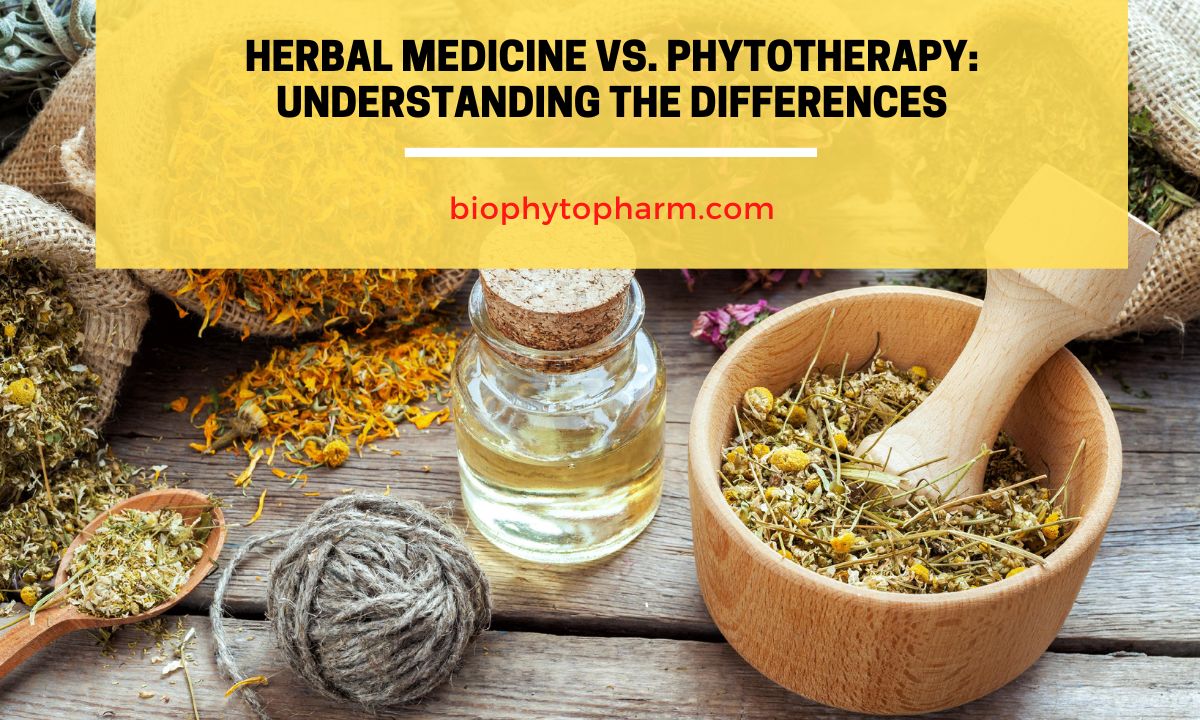Herbal Medicine vs Phytotherapy: Unveiling the Differences and Benefits
In the world of natural remedies and alternative healthcare approaches, the terms “herbal medicine” and “phytotherapy” are often used interchangeably, causing confusion among individuals seeking reliable information about these practices. While both involve the use of plant-based remedies for healing purposes, they encompass distinct methodologies, applications, and scopes that set them apart. Let’s delve into the depths of each, unraveling their unique attributes and benefits.
Understanding Herbal Medicine
Herbal medicine, also referred to as herbalism or botanical medicine, is an ancient practice dating back centuries, leveraging the healing properties of various plants and their extracts to address health concerns. This practice encompasses a vast array of plants, including roots, leaves, flowers, seeds, and bark, each possessing distinctive therapeutic properties.
In herbal medicine, remedies are often created through different forms such as teas, tinctures, capsules, or topical applications. The approach is holistic, aiming not only to treat symptoms but also to address the root cause of ailments, considering the individual’s overall health and well-being.
Exploring Phytotherapy
On the other hand, phytotherapy, often considered a more scientific approach, focuses on the therapeutic properties of plant extracts and their active compounds, studying them in a more isolated and controlled manner. It involves the extraction and utilization of specific plant constituents like polyphenols, alkaloids, and flavonoids, which are then formulated into standardized extracts or pharmaceutical-grade medicines.
Phytotherapy emphasizes the evidence-based use of plants, conducting rigorous research and clinical studies to validate their efficacy in treating various health conditions. It integrates modern scientific principles with traditional knowledge, aiming to produce targeted and potent remedies derived from plants.
Key Differences and Benefits
The primary distinction between herbal medicine and phytotherapy lies in their approaches and methodologies. Herbal medicine embraces a holistic and traditional approach, utilizing the entirety of plant components, while phytotherapy employs a more focused and scientific methodology, isolating specific active compounds for therapeutic purposes.
Herbal medicine offers a broad spectrum of remedies catering to diverse health concerns, often focusing on the synergy of various plant constituents, which may provide multifaceted benefits for overall health. In contrast, phytotherapy concentrates on standardized extracts, ensuring precise dosages of active compounds, leading to targeted and potentially more potent therapeutic effects.
Applications and Considerations
In the realm of application, herbal medicine finds its ground in traditional practices and holistic wellness approaches. It’s often employed in naturopathic medicine, traditional Chinese medicine (TCM), Ayurveda, and other holistic healthcare systems.
Phytotherapy, with its rigorous scientific backing, integrates seamlessly into modern medicine and pharmaceutical industries. The isolated and standardized extracts enable precise dosing and formulation, making it suitable for incorporation into conventional medical treatments and therapies.
Conclusion: Harnessing Nature’s Bounty
In essence, both herbal medicine and phytotherapy harness the potent healing properties of plants, albeit through different approaches. While herbal medicine embraces tradition and holistic wellness, phytotherapy adopts a more scientific and focused methodology.
Understanding the nuances and differences between these practices empowers individuals to make informed choices regarding their health and well-being. Whether opting for the holistic approach of herbal medicine or the scientifically-backed precision of phytotherapy, both avenues offer valuable natural alternatives in the realm of healthcare.






